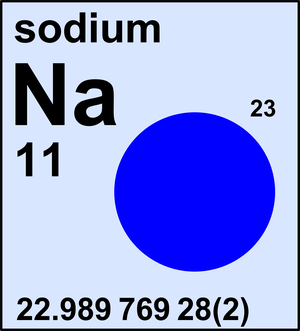Question #6cd32
1 Answer
Sodium.
Explanation:
The idea here is that a group 1 metal will react with sulfur, a nonmetal, to form a metal sulfide, which as you know is an ionic compound.
Let's say that this group 1 metal is labeled
On the other hand, sulfur,
This means that the formula unit for your metal sulfide will be
#2 xx ["M"]^(+) " "+" " ["S"]^(2-) " "implies" " "M"_2"S"#
Now, you know that you're starting with a
Since the mass of the metal sulfide includes the mass of the metal and the mass of sulfur, it follows that you have
#m_"sulfide" = m_"metal" + m_"sulfur"#
#m_"sulfur" = "7.8 g" - "4.6 g" = "3.2 g"#
Use sulfur's molar mass to determine how many moles of sulfur are present in this sample
#3.2 color(red)(cancel(color(black)("g"))) * "1 mole S"/(32.065color(red)(cancel(color(black)("g")))) = "0.09980 moles S"#
According to the law of mass conservation, the number of moles of metal present in the initial sample will now be a part of the metal sulfide.
Now take a look at the formula unit for the metal sulfide. One mole of
In other words, you get twice as many moles of metal for every mole of sulfur present in the metal sulfide. This means that the sample will contain
#0.09980 color(red)(cancel(color(black)("moles S"))) * "2 moles M"/(1color(red)(cancel(color(black)("mole S")))) = "0.1996 moles M"#
The molar mass of the metal will represent the mass of one mole. Since your
#1 color(red)(cancel(color(black)("mole M"))) * "4.6 g"/(0.1996color(red)(cancel(color(black)("moles")))) = "23.05 g"#
Since one mole of metal has a mass of
#M_M = color(green)("23 g/mol") -> # rounded to two sig figs
This means that your unknown metal is sodium,


